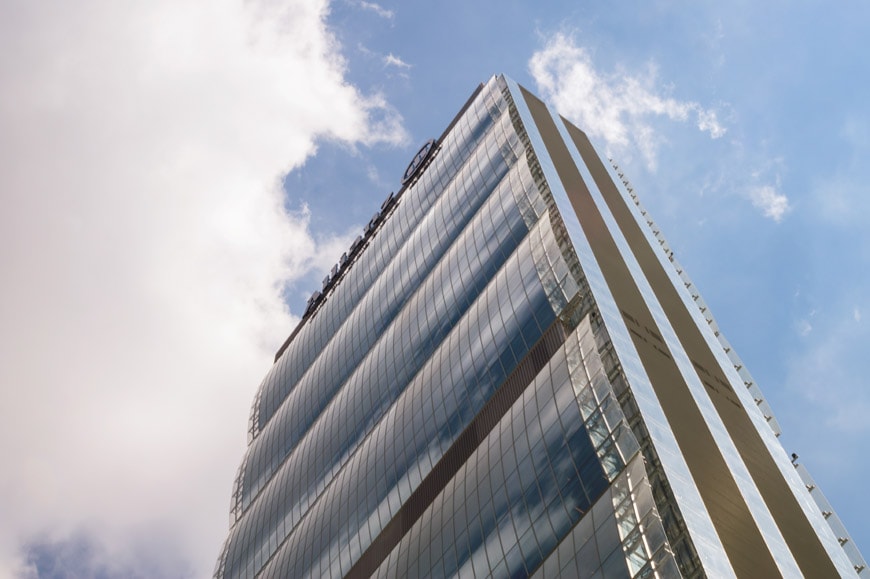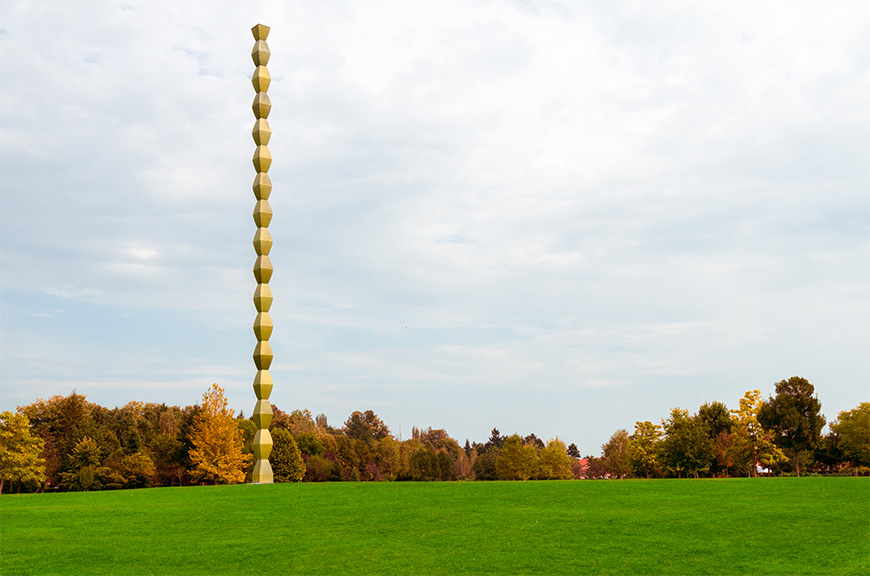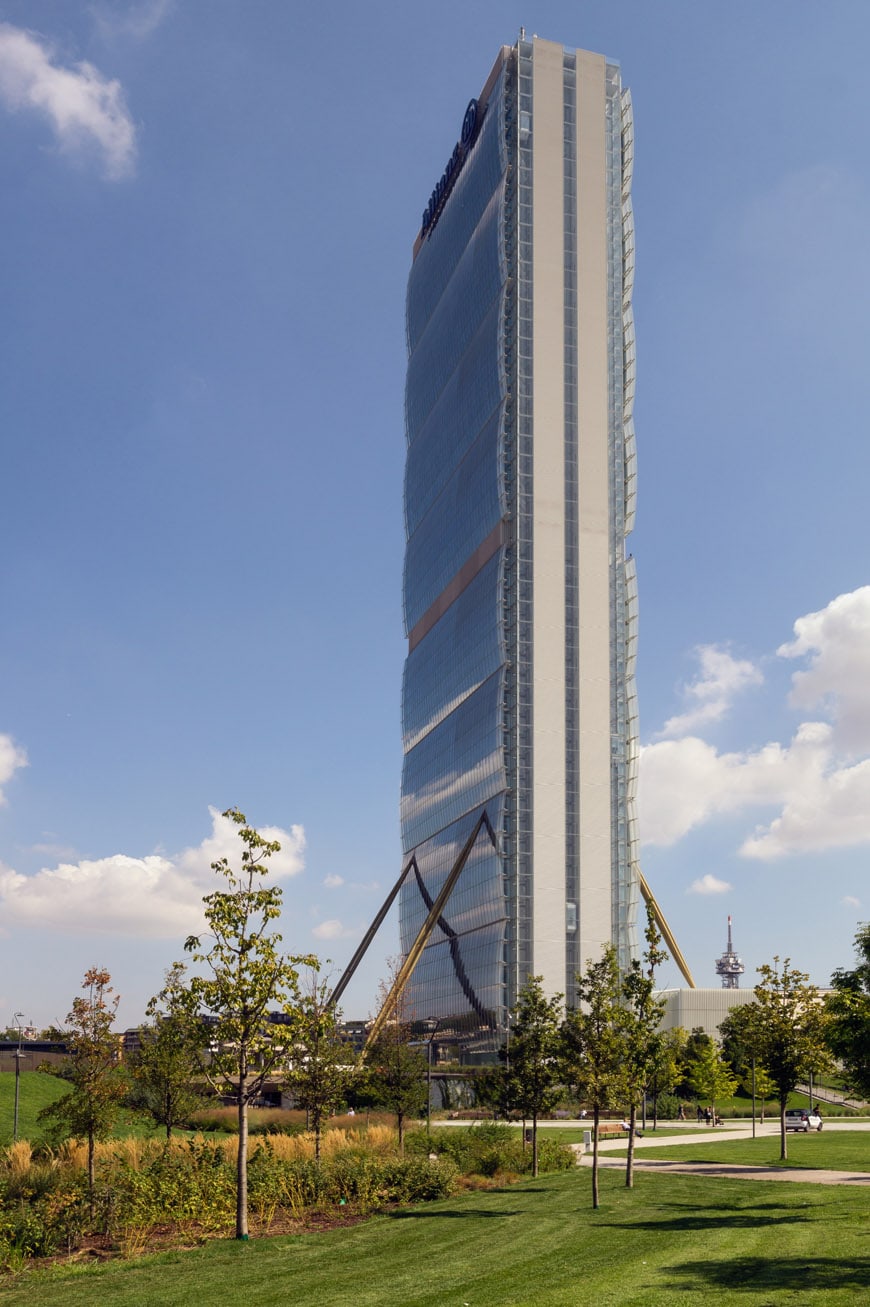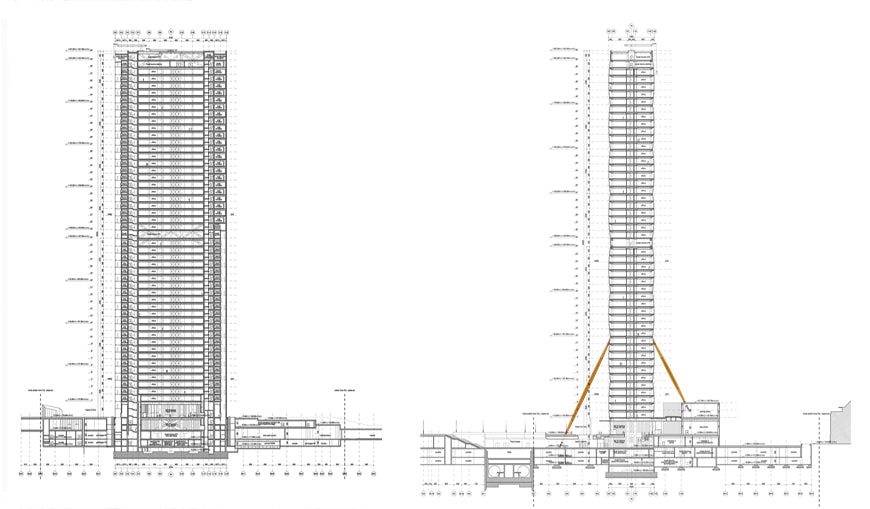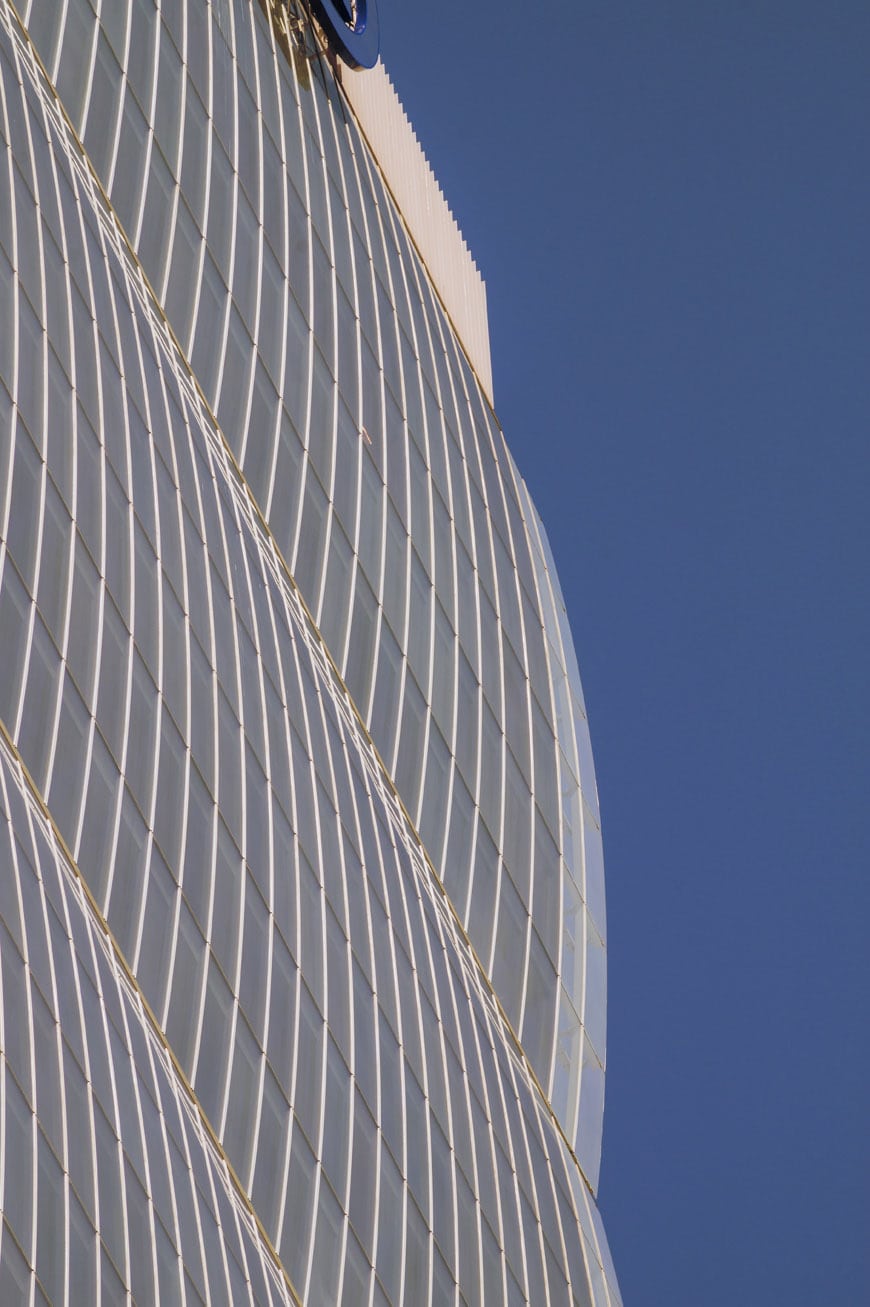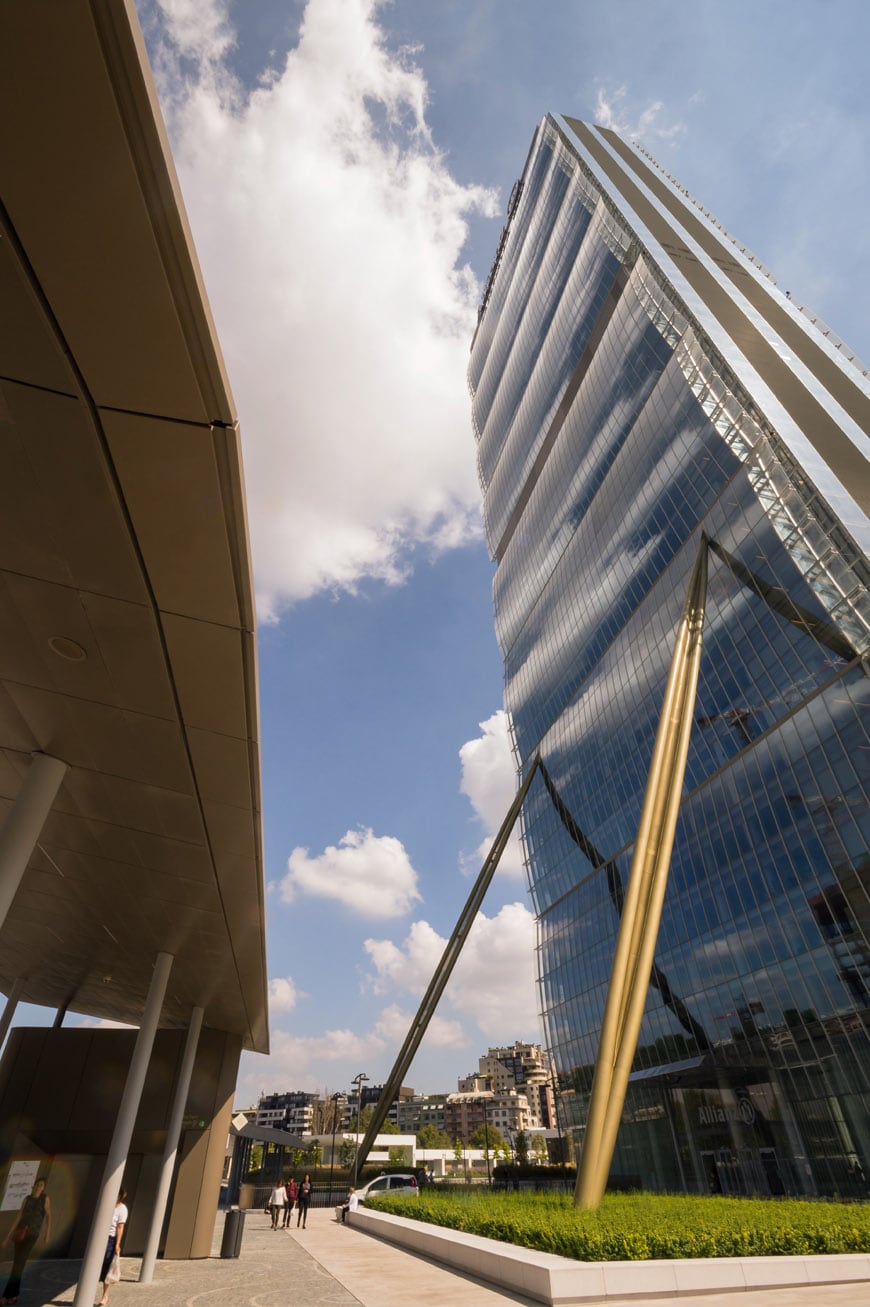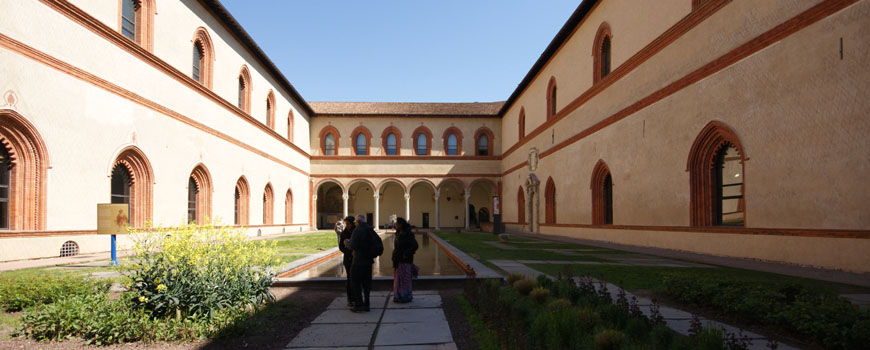Allianz Tower, Milan – Arata Isozaki & Andrea Maffei
Allianz Tower, Milan, exterior view of the north-western facade. Photo © Riccardo Bianchini / Inexhibit
Allianz Tower Milan – Arata Isozaki and Andrea Maffei
Designed by Japanese architect Arata Isozaki together with Andrea Maffei for insurance company Allianz, The Allianz Tower in the CityLife district of Milan is a 209-meter / 686-foot tall skyscraper inaugurated on June 13, 2018.
Nicknamed “Il Dritto” (The Straight), the skyscraper caused mixed reactions; someone deemed its architecture outstanding while others criticized it as an uninspiring example of “blocky design”. My opinion is that the architecture of the Allianz Tower is rather good, with a slender form and beautifully-designed curtain facades.
Yet, the four huge, gold-painted struts (added for structural reasons) are visually out of context, honestly.
Structurally, this 55-story skyscraper stands on a foundation consisting of a massive reinforced concrete slab and sixty-three 31-meter-long piles. Above the ground, the structure is composed of two concrete cores and a steel frame, while the two huge belt trusses topping the building were made of fiber-reinforced high-strength concrete (FRHSC).
The four buttresses mentioned above were introduced by structural engineers to prevent excessive horizontal movements of the top of the tower under strong wind and seismic loads.
From an architectural point of view, Isozaki’s intent was to create a very slender tower projecting “towards the sky”, furthermore the Japanese architect wanted to design a modular system, instead of a traditional unitary building. Consequently, he conceived the whole tower as a vertical succession of eight 6-story-high “modules”, 61 meters / 200 feet wide and 24 meters / 79 feet deep. Each module is slightly “barrel-shaped” so as to further emphasize the modularity of the building and make its facades more dynamic looking.
“The facade of the module is composed of a triple glass unit slightly curved to the outside. The vertical succession of rounded forms creates a feeling of slight vibration of the volume of the building as it rises upward. Elevations of the short sides are fully glazed and show the mechanical series of panoramic lifts going up and down to the various floors of the building.”
Isozaki and Maffei admit that such a design was inspired by the Endless Column created in Târgu Jiu by Romanian artist Constantin Brâncuși in the late 1930s
“The idea of an endless tower can be retraced in the works by other artists, such as Constantin Brancusi who, in 1937-38, installed one of his Endless Columns in the Targu-Jiu park in Romania to create a system which can be replicated indefinitely. When asked about the reasons for this idea, Brancusi replied: “We need to support the vault of heaven.”
Constantin Brâncuși, Endless Column, 1934,Târgu Jiu, Romania; photo Ion George (CC BY 2.0).
Pictures
Allianz Tower Milan, view from the southwest. Photo © Riccardo Bianchini / Inexhibit
Allianz Tower, longitudinal and transverse sections. Courtesy of Arata Isozaki & Associates and Andrea Maffei Architects
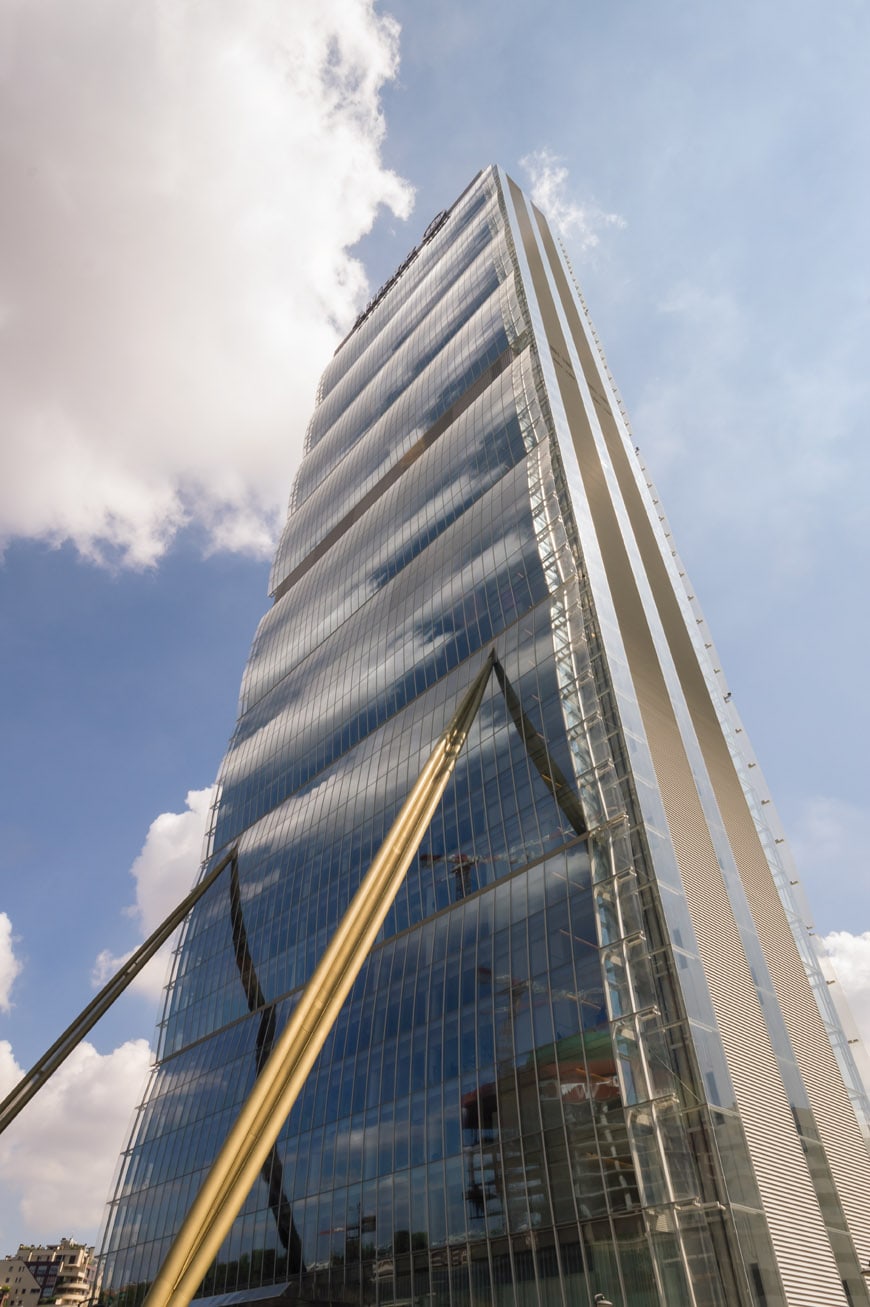
Allianz Tower, Milan, exterior view of the north-western facade with one of the four gold-colored struts. Photo © Riccardo Bianchini / Inexhibit
Close-up view of the southwest facade and its undulating steel and glass skin. Photo © Riccardo Bianchini / Inexhibit
Arata Isozaki and Andrea Maffei, Allianz Tower, Milan, exterior view of the north-western facade. Photo © Riccardo Bianchini / Inexhibit
copyright Inexhibit 2024 - ISSN: 2283-5474

